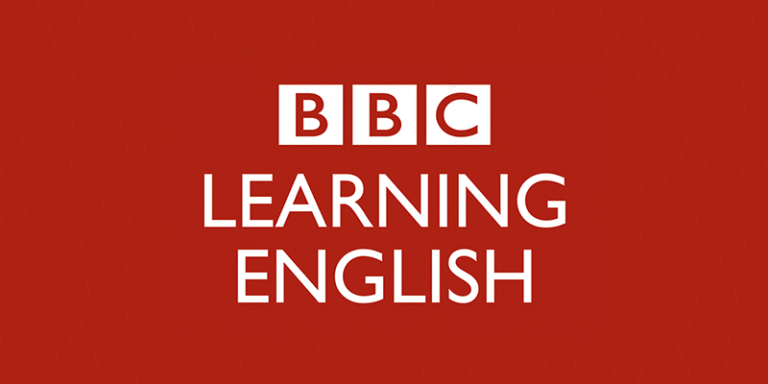پادکست BBC شماره 233 – The three-parent baby
پادکست BBC شماره 233
سلام با دویست و سی و سومین سری از پادکستهای BBC 6 Minute English در خدمت شما هستیم.
در این قسمت درباره اینکه آیا میشود از روی چشمان به شخصیت یک نفر پی برد؟ صحبت میشه. یافته اصلی در مطالعه دانشمندان این است که می توان فقط به حرکات چشم نگاه کرد و سپس چیزی در مورد شخصیت آنها حدس زد. قبل از مطالعه آنها ، به هیچ وجه مشخص نبود كه آیا این امر می تواند از حرکات چشم درباره شخصیت انسانها چیزی دانست.
در زیر کلمات کلیدی که باید با آنها آشنا شوید برایتان توضیح داده شدهاند:
DNA : chemical structure present in the centre of a cell which defines somebody’s characteristics
DNA : دی ان ای
genes : parts of the DNA
genes : ژن
faulty : defective, something that doesn’t work properly
faulty : معیوب، ناقص
genetics : the science of how living creatures pass their characteristics to their offspring
genetics : ژنتیک
pioneering : something never done before
pioneering : پیشقدم شدن
mitochondria (the singular is irregular: mitochondrion) : structures in a cell which produce energy, the cell’s ‘batteries’
mitochondria (the singular is irregular: mitochondrion) : میتوکندری
the gene is out of the bottle : something which can’t be stopped after it has started
the gene is out of the bottle : چیزی که پس از شروع آن نمی تواند متوقف شود
designer babies : babies whose characteristics like height, sex, hair and eye colour are created to order
designer babies :نوزادانی که ویژگی های آنها مانند قد ، جنس ، مو و رنگ چشم به ترتیب ایجاد می شود
mind-boggling : astonishing, overwhelming
mind-boggling : حیرت انگیز
Transcript of the podcast

پادکست BBC 6 minute English – The three-parent baby
Neil
Hello. Welcome to 6 Minute English. I’m Neil and with me in the studio today is Harry.
Harry
Hello!
Neil
We all have two biological parents but in the future if someone from the UK tells you they have three parents, it might be true.
Harry
That’s right. This is because the UK has become the first country to approve laws allowing the creation of babies with DNA from three people! DNA is the chemical structure present in the centre of a cell which defines somebody’s characteristics. This is to fight a particular disease.
Neil
Yes. Sometimes parts of the DNA called genes are faulty; it means they don’t work properly and this might cause problems later on. A new technique will allow some of these genes to be replaced by healthy ones from a third person.
Harry
This practice is controversial – people argue about it. They fear we’re going to mess with nature and end up with a Frankenstein’s monster!
Neil
Wow, that would be frightening, let’s hope it doesn’t happen! Well, in this programme we’re talking about the three-parent baby and you’re going to learn some vocabulary related to reproduction.
Harry
Genetics – the science of how living creatures pass their characteristics to their offspring – is fascinating, Neil!
Neil
It is fascinating, and you know what I find most surprising, Harry? It’s how much DNA we have in common with other living creatures.
Harry
I’ve heard that a very high percentage of our DNA is similar to the DNA of monkeys.
Neil
The comparison with monkeys is easy. Over 95% of our DNA is identical to theirs. But what you might not know is… how much of our DNA is similar to the DNA in a banana?
Harry
A banana?!
Neil
Yes. And that’s my quiz question today. What percentage of our DNA is similar to that of a banana? Is it:
a) About 1%
b) About 20% or
c) About 50%
Harry
I think we have very little in common with bananas so I’m gonna go for 1%.
Neil
Well, I’ll give you the correct answer at the end of the programme. Now let’s talk about the three-parent baby. A pioneering technique, in other words, a technique never used before, has been developed by scientists in Newcastle University here in the UK. The technique helps people with faulty mitochondria, which are structures that work like energy factories in our cells. The mitochondria are like batteries.
Harry
And what kind of problems do people who inherit faulty mitochondria have?
Neil
They have serious health problems such as brain damage and heart failure.
Harry
That’s terrible! Maybe it would be good to have this technique approved.
Neil
Well, not everybody agrees with it. Fiona Bruce, who is a Member of Parliament here in Britain, expressed concern when the proposal was discussed in Parliament. Listen out for the expression she uses right at the beginning of her speech. It means that when you start something, you can’t take it back.
Fiona Bruce MP
Once the genie is out of the bottle, once these procedures that we are being asked to authorise today go ahead, there will be no going back for society.
Harry
She says that the genie is out of the bottle. It’s an expression to do with fairy tales – in particular, the story of Aladdin, when he rubs a lamp and a genie appears. When the genie is released, anything is possible – even bad things. And there’s nothing anyone can do to stop it.
Neil
So in the case of DNA engineering, people are afraid that similar techniques might be used to create designer babies – babies whose characteristics like height, sex, hair and eye colour are created to order. Or we might be looking at babies with several parents – and who knows where it might end.
Harry
But the approval of this proposal has also made many people happy,
Neil
Yes, people like Victoria, a mother who has a sick child because of faulty mitochondria. She uses an expression which means ‘amazing or astonishing’. Which expression is it?
Victoria Holliday, mother who will benefit from the new technique
It’s just mind-boggling what this could mean for our family and for other families who are affected. It’s just the best news!
Harry
She uses the expression ‘mind-boggling’, in other words something astonishing, overwhelming. That’s great news for this lady. I’m happy for her.
Neil
Yes, it is. According to statistics faulty mitochondria affects one in every 6,500 babies – a considerable number of people. Well, this is an interesting subject but we’re running out of time and…
Harry
… and you’re going to tell me what percentage of DNA we have in common with a banana, aren’t you?
Neil
I am. And the options I gave you were about 1%, 20% or 50%. And you said…
Harry
I said I thought it was just 1%.
Neil
Well, can you believe that it’s 50%? We are half… half and half like bananas.
Harry
That’s incredible! They’re not even mammals, we are so different to them … It’s mind-boggling!
Neil
Let’s listen to today’s words once again, Harry.
Harry
Yes. They were:
DNA
genes
faulty
genetics
pioneering
mitochondria (the singular is irregular: mitochondrion)
the genie is out of the bottle
designer babies
mind-boggling
Neil
Well, that’s it for today. Do go to www.bbclearningenglish.com to find more 6 Minute English programmes. Until next time. Goodbye!
Harry
Bye!
برای شنیدن دیگر پادکست ها، به بخش پادکست در مرکز آموزش رایگان مراجعه نمایید.







